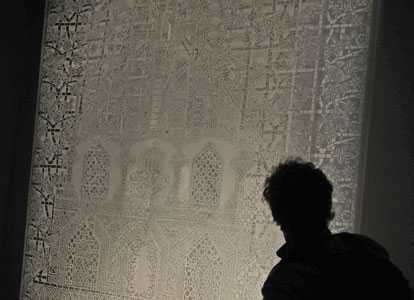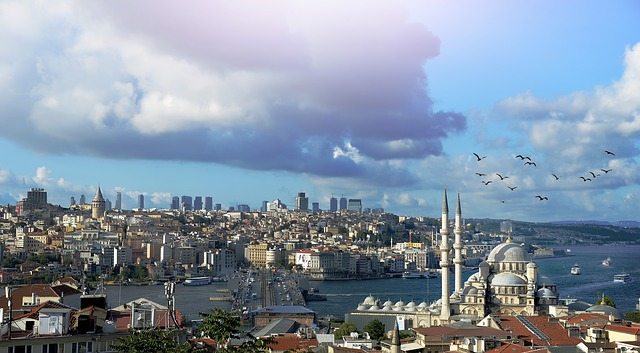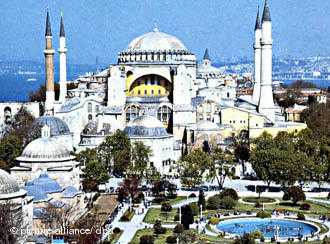EMRAH GÜLER
ISTANBUL – Hürriyet Daily News
Two films about the history of Ottoman Istanbul hit theaters this week. The big budgets of projects celebrating Istanbul as a 2010 European Capital of Culture have prompted many filmmakers to seek involvement in projects set in historical Istanbul. Wait for more movies in the near future

Unless a director is releasing a movie hoping to cash in on cheap laughs, historical movies and documentaries fall into the riskiest categories for Turkish producers to approach.
Period dramas and historical movies have, in the past, been some of the most popular films to screen in Turkey.
Half a century ago, they were the ultimate form of entertainment, not because of their accurate portrayal of the relevant period but for quite the opposite reason. They suffered from borderline cinema disorder, being more histrionic than historical.
The notorious B-movies of the 1960s and 1970s have become history themselves, as Turkish cinema has gone through a renaissance of its own in the last two decades. Diverse examples of high caliber cinema have found their way into movie theaters but historical cinema has remained an area where not much improvement can be observed.
For one, historical movies and documentaries fall into the riskiest categories for Turkish producers to approach. Unless you are releasing a movie hoping to cash in on cheap laughs (exemplified by the movies featuring the vulgar antics of Recep İvedik) or hoping to hit a nation’s soft spot on nationalism (for example, the “Valley of the Wolves” series), box office gross is a pure gamble in Turkey. What producer would want to greenlight an expensive production when there is another story set in an Anatolian village in the present day?
Of course there is one thematic exception in this otherwise general trend in the profitability of historical movies: Atatürk films. Two years ago, renowned documentary director and biographer Can Dündar’s intimate account of Atatürk’s life, “Mustafa,” caused quite a stir, dividing the nation. This was good news for the box office. Last year, two quite mediocre features on Atatürk hit the theaters. Both writer, composer, singer and filmmaker Zülfü Livaneli’s “Veda” (Farewell) and Turgut Özakman’s “Dersimiz Atatürk” (Today’s Lesson, Atatürk) depicted the former Turkish leader’s life in dry, chronological order, merely better than a high quality middle school documentary.
This week, you will see the words Ottoman and Istanbul in two movies. One of them, a high-octane action/conspiracy/history thriller in the line of Jerry Bruckheimer’s “National Treasure” series. The other, a love story set in Ottoman Istanbul.
The Abdülhamid Code
Director Hakan Şahin’s “Sultan’ın Sırrı” (Secret of the Sultan) features an American professor traveling to Istanbul to find a mysterious chest built by Sultan Abdülhamid II about a century ago. He learns the chest is somehow relevant to the present dynamics of the power games over oil and the best place to look for it is Topkapı Palace, now the Topkapı Museum.
In a mixture of the “National Treasure” movies and Dan Brown’s “The Da Vinci Code” and “Angels & Demons,” secret societies and historical conspiracies are revealed through by mysterious museum director (that would be historian İlber Ortaylı in real life). The conspiracies go back to the Gulf Wars, the Iran-Iraq War, World War I, and finally to the final years of the Ottoman Empire, giving way to action scenes in the historic underground passages of Istanbul. The film was written by historian and journalist Ömer Erbil, and features locations in many of Istanbul’s historic buildings, like Yıldız Palace, Hagia Sophia and the Archaeology Museum.
The other film is an unabashed promotion of Istanbul, as one of the many projects celebrating Istanbul’s status as a 2010 European Capital of Culture, with the story never really given priority over the beautiful footage of the city. “Şenlikname: Bir Istanbul Masalı” (Festivities: An Istanbul Tale), directed by İsmail Eren, is a love story set in the Ottoman period that begins with the kidnapping of the Sultan’s daughter. But which period or sultan is not very clear. The film promises to be a jumble of historical imagery from the Ottoman period, including the “mehter” band of musicians, pirates, and palace guardsmen.
The big budgets of projects celebrating Istanbul as a 2010 European Capital of Culture have prompted many filmmakers to seek involvement in the projects set in historical Istanbul. One of these is the big budget production about the Ottoman conquest of Istanbul, anticipated by many with apprehension. “Fetih 1453” (The Conquest 1453) has been a hot topic of debate for the last year – with its acclaimed advisors on history, costumes and architecture, its ambitious war scenes enhanced by state-of-the-art CGI technology and its mysterious casting of the role of Sultan Mehmed II, who was just 21 when he conquered Istanbul. The costume shops must now be running amok with booming demands for Ottoman dress.




